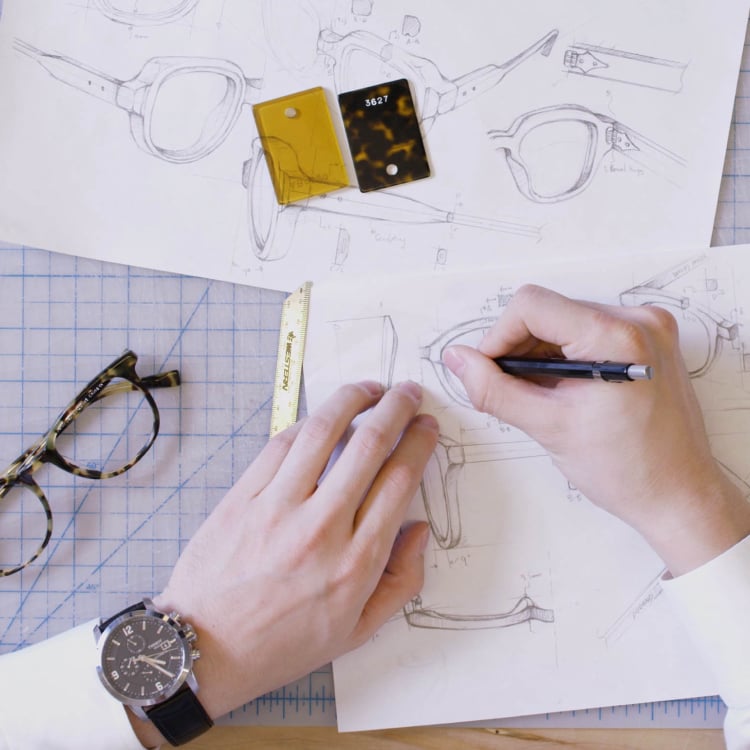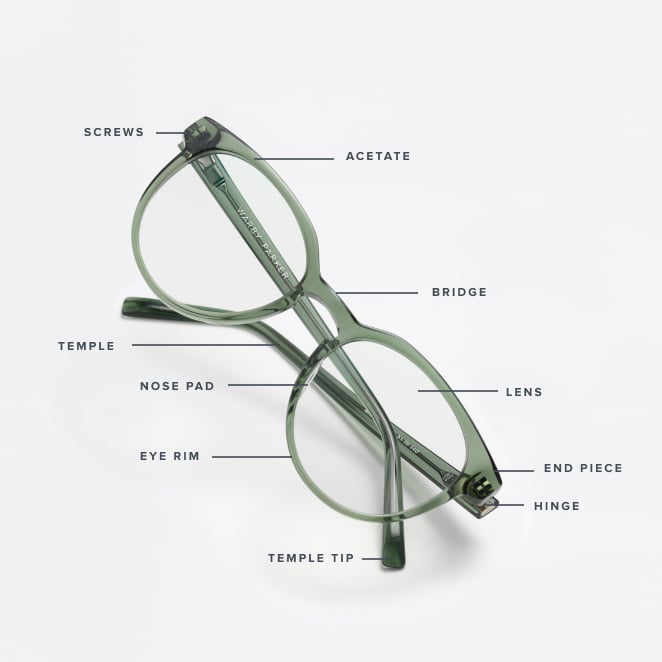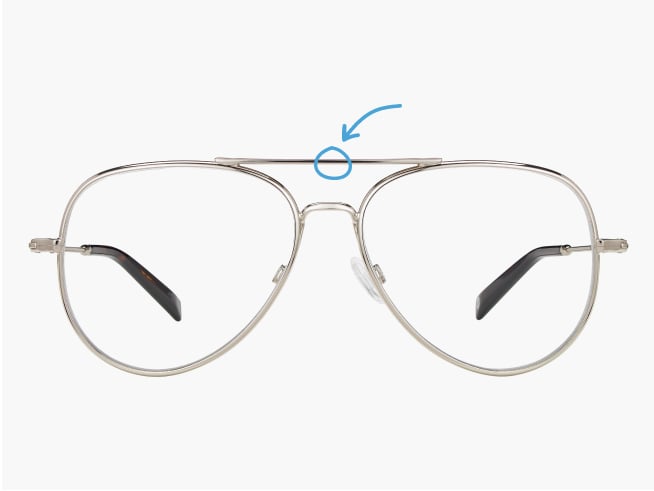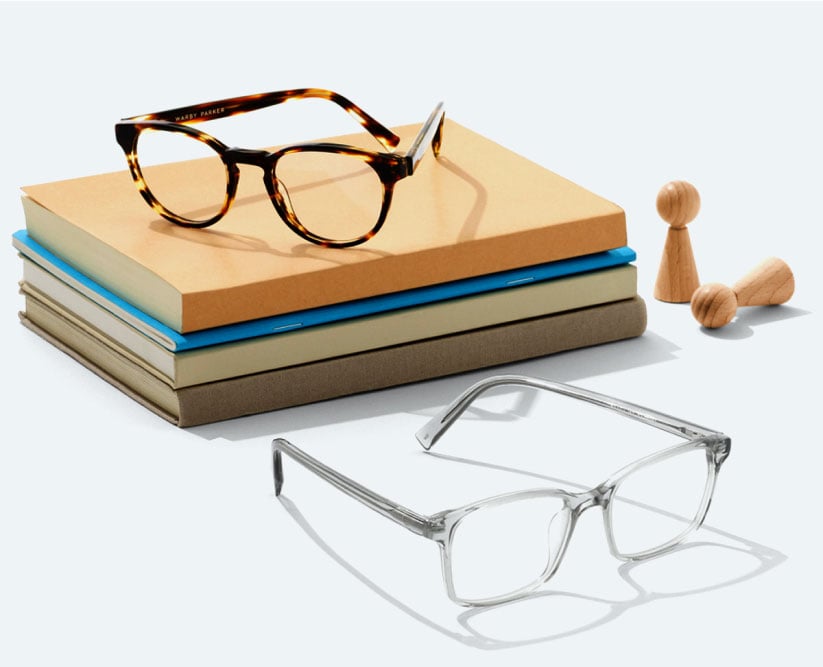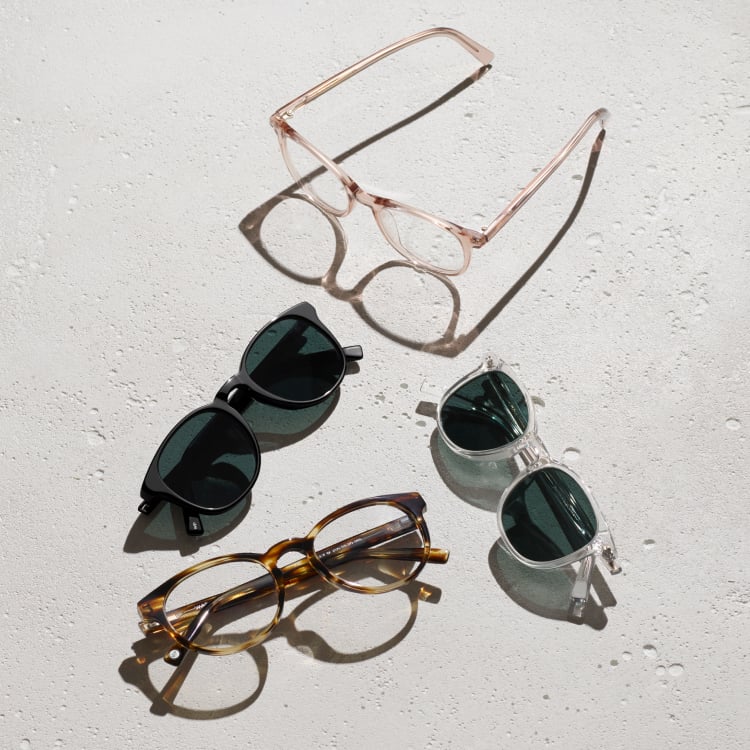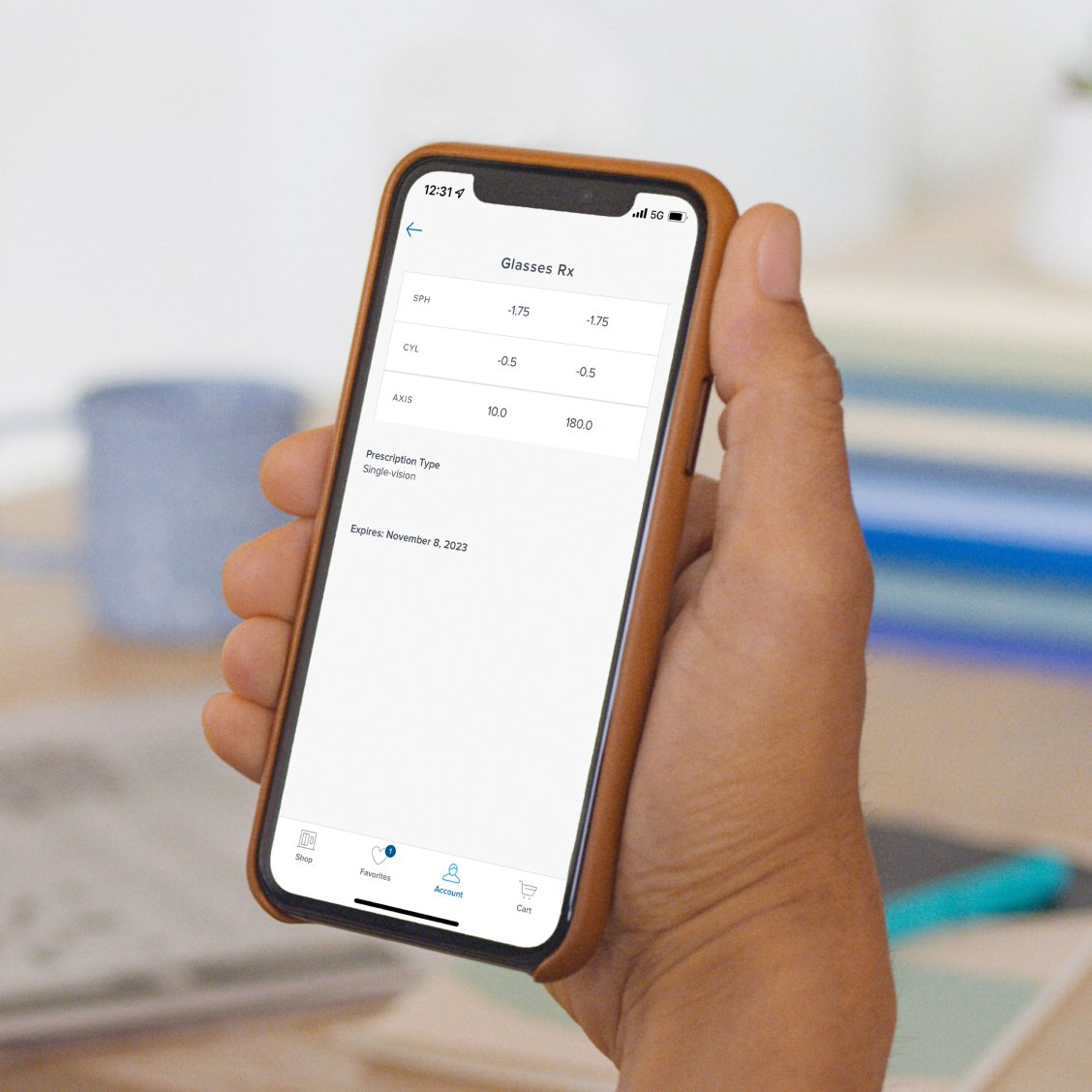Although they’re small enough to fit over your face, glasses are complex pieces of machinery. Each element must work in partnership with the next to ensure that you have clear vision (all while looking stylish).
So when a part of your glasses frame breaks or isn’t functioning properly, it can be tough to describe—or even locate—the problem. Knowing your glasses anatomy is one part of the fix: it can help you understand how the parts of glasses fit together and diagnose any issues.
Learning about glasses parts is also useful when it comes to speaking with an optical professional. Instead of referencing the “small metal part” or the “long thingamajig on the side,” you’ll be able to speak their language.
Glasses Anatomy Diagram
Take a look at all the different parts of eyeglasses labeled on this diagram, then read on to learn how they come together to make such an essential accessory.
Glasses Part Names
When you go to the optometrist and get an eye prescription, you usually talk about glasses as a combination of two key parts: lenses and frames.
Lenses
Lenses are the transparent pieces that you look through when wearing glasses. They’re customized to your prescription, which means that they refract light in a way that corrects your vision issues (the most common being nearsightedness, farsightedness, and astigmatism).
There are several different types of lenses and lens materials. Depending on your prescription, you might need single-vision or multifocal lenses, such as progressives.
Your eye doctor can point you in the direction of the right lenses for your eyes, and from there you can also ask about special coatings, tints, and features. For example, anti-reflective and hydrophobic coatings come standard on all Warby Parker lenses, but you have the option to add a blue-light-filtering coating or light-responsive transition lenses.
Frames
The frame is everything that surrounds the lenses—it’s the basic structure or “skeleton” of the glasses. It’s likely made of acetate or metal, and can be subtly chic or loud and proud with its shape and coloring.
Frames have many separate components that enable them to sit comfortably in front of your eyes.
Rims: The part of the glasses frame that holds the lenses. Often, the rims are what give the glasses their distinctive style. They can be round, square, oval, or any other kind of shape that will accommodate prescription lenses.
Some glasses have full rims, while others might be semi-rimless, which means the rims don’t go all the way around the lens. Glasses rims are also sometimes called eye wires.
Bridge: A crucial part of the eyeglasses frame, the bridge supports the majority of the frame’s weight. It’s the connective bit of material between the two rims that lays across the bridge of your nose.
The bridge is what determines the comfort and fit of your glasses, so you should make sure that it’s suited to your face shape. If you’re someone with a wide face, a low nose bridge, and/or high cheekbones, then a pair of Low Bridge Fit glasses might be best for you.
Top bar / brow bar / sweat bar: Sometimes, a pair of glasses will sport what looks like a second bridge above the first one. This bar is called a top bar, brow bar, or sweat bar. It’s both a fashion statement and a way to make a pair of glasses more sturdy.
Nose pads: The tiny, cushion-y parts that sit on your nose to further assist with fit and keep your glasses from slipping. They’re most common on metal frames and tend to be made of clear plastic. With acetate frames, separate nose pads aren’t needed—instead, they’re built right into the rims.
Pad arms: The small arms affixed to the rims that hold the nose pads. They’re often adjustable so that you can find the perfect fit for your frames. Again, nose pads and pad arms are usually found on metal frames, not plastic ones.
End pieces: At the upper, outer corners of the frames, you’ll find the end pieces. These parts of the glasses frame jut out slightly so that they can connect to the hinges and temples. They might also boast decorative details, such as rivets or embellishments, that make them stand out.
Hinges: Without hinges, you wouldn’t be able to fold the temples of your glasses inwards for convenient storage. The hinges are joints that are held together by a screw, and they connect the endpiece part of your glasses to the temples or arms. They come in several types, but they should all allow for easy movement of the glasses arms.
Screws: The two halves of a hinge are secured together by a screw. If you’ve ever seen a glasses repair kit with a teensy screwdriver, now you know what it’s for! The screws inside your glasses hinges can be tightened, loosened, or replaced, depending on what your frames need.
Temples or Arms: The two long, skinny parts of your eyeglasses that attach via the hinge and stretch back to sit over your ears. They’re responsible for keeping your glasses in place while you go about your day. They can vary in length and shape—some glasses arms might have more dramatically curled ends, while others are more straight.
Temple tips: Also known as earpieces, the ends of each temple (or arm) sit snugly behind your ears. The temple tips of metal glasses are sometimes made of a different, more comfortable material that prevents skin irritation.
Read More: Glasses Measurements: How to Find Your Frame Size
What About Parts of Sunglasses?
The anatomy of sunglasses doesn’t differ from that of regular eyeglasses. The parts are the same across the board, except for the fact that sunglass lenses are tinted (and can have other features, such as polarization).
Know Your Eyeglass Parts, Frames, and Styles
Knowing the different parts of your glasses will better enable you to care for and appreciate them. What’s more, you can now recognize these parts across all the different types of glasses and frame styles, no matter how complicated they first appear.
Ready to test your knowledge? We recommend trying on some new glasses at home to get a closer look at their components and see which ones best complement your personal style.

